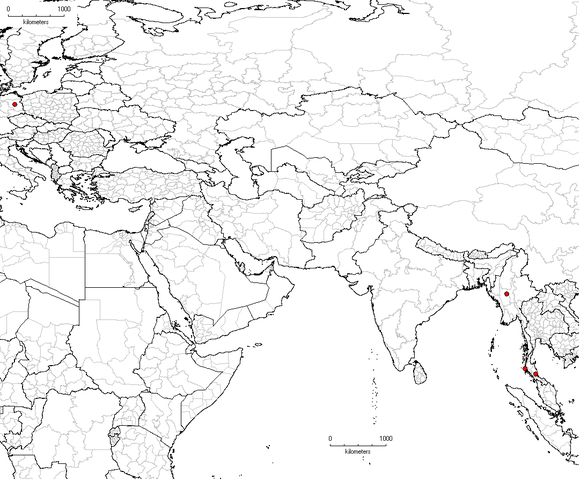Nomenclature
Ipomoea muricata (L.) Jacq., Pl. hort. schoenbr. 3(2): 40, plate 323. 1798.
Convolvulus muricatus L., Syst. Nat. ed. 12, 2: 156. 1767
C. colubrinus Blanco
Calonyction longiflorum Hasskarl
C. muricatum (L.) G. Don
C. speciosum Choisy var. muricatum (L.) Choisy
Ipomoea bona-nox L. var. purpurascens Ker-Gawler
Ipomoea turbinata Lagasca
Description
Fang R.C., G. Staples, et al. 1995. Convolvulaceae in P. Raven & C.Y. Wu (eds.) Flora of China 16: 271–325.
Cytology
Fang R.C., G. Staples, et al. 1995. Convolvulaceae in P. Raven & C.Y. Wu (eds.) Flora of China 16: 271–325.
Biogeography, Ecology and Natural History

Native in tropical America, now pantropical; cultivated and naturalized in China (Henan, Hubei, Hunan, S Yunnan), India, Indonesia, Japan, Kashmir, Myanmar, Nepal, Pakistan, Philippines, Sri Lanka, Vietnam; Africa.
In
thickets, floodlands; 600–1200 m.
Fang R.C., G. Staples, et al. 1995. Convolvulaceae in P. Raven & C.Y. Wu (eds.) Flora of China 16: 271–325.
Other information
Gunn (Brittonia 24: 150–168. 1972) discussed the nomenclature of this species, and took up the name I. turbinata Lagasca for it. Subsequently, Staples et al. (Taxon 54: 1075–1079. 2005) established that the correct name has to be I. muricata (L.) Jacq.
Authorship for webpage


Add new comment